Three eras and six periods in the history of knightly weapons
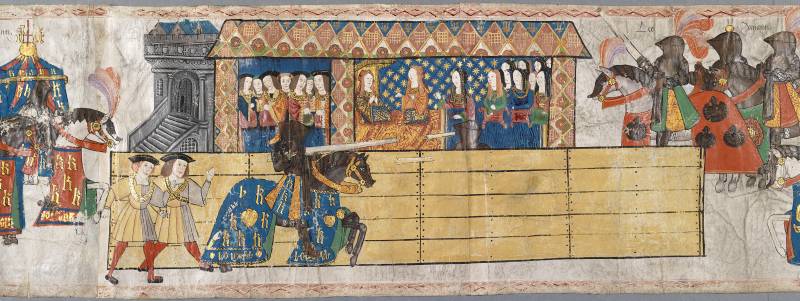
"Westminster Tournament Scroll" 1511. An illustration showing how Henry VIII fights in a tournament in front of his wife Catherine of Aragon. Thomas Wriothesley (1460–1534). Heraldic College Collection
Daniel 2:21
Problems historical science. They say that everything in the world develops and, in general, everything that happens is for the better. Here, for example, history books ... of the Middle Ages. We read the textbook of 1969 (Agibalova, E.V. History of the Middle Ages: Textbook for the 6th grade / E.V. Agibalova, G.M. Donskoy, M .: Education, 1969. S. 33) and this is what we find there :
The knights fought on strong, hardy horses, which were also protected by armor. The armament of the knight was very heavy: it weighed up to 50 kilograms. Therefore, the warrior was clumsy and clumsy. If the rider was thrown off his horse, he could not get up without outside help and was usually captured. To fight on a horse in heavy armor, a long training was needed, the feudal lords prepared for military service from childhood. They constantly practiced fencing, horseback riding, wrestling, swimming, and javelin throwing.
A war horse and knightly weapons were very expensive: for all this it was necessary to give a whole herd - 45 cows! The landowner, for whom the peasants worked, could carry out knightly service. Therefore, military affairs became the occupation almost exclusively of the feudal lords.
Years have passed and the content of the textbook has changed a lot for the better. In the third edition of the textbook "History of the Middle Ages" for the 2002th grade of secondary school V.A. Vedyushkin, published in XNUMX, the description of knightly weapons has become somewhat more thoughtful:
The main offensive weapons of the knight were a sword and a long (up to 3,5 m) heavy spear. The use of knightly weapons was allowed by stirrups, which in Western Europe were adopted from the East in the early Middle Ages. When a knight, protected from head to toe in armor, on a war horse with a spear at the ready, rushed into the attack, it seemed that there was no force capable of withstanding his blow.
But perhaps it would be worthwhile for those who create such textbooks to think a little. Maybe instead of making a real vinaigrette out of historical information, it would be worth giving a harmonious periodization of such an important and interesting phenomenon in the history of mankind as chivalry, and at the same time diluting their armor and weapons over the centuries. There is something to rely on - we have more than 6000 effigies and many thousands of manuscripts, stained-glass windows and frescoes, not to mention artifacts of armor and weaponspreserved in museums and castles. And then our chronology will be as follows: at the very beginning, the era of the "dark ages" - armor and weapons from 476 to 1066. Few of them have survived to our time, but still there is something, and besides the artifacts found by archaeologists, there are also miniatures in the books of that era, by which one can just judge how they looked.
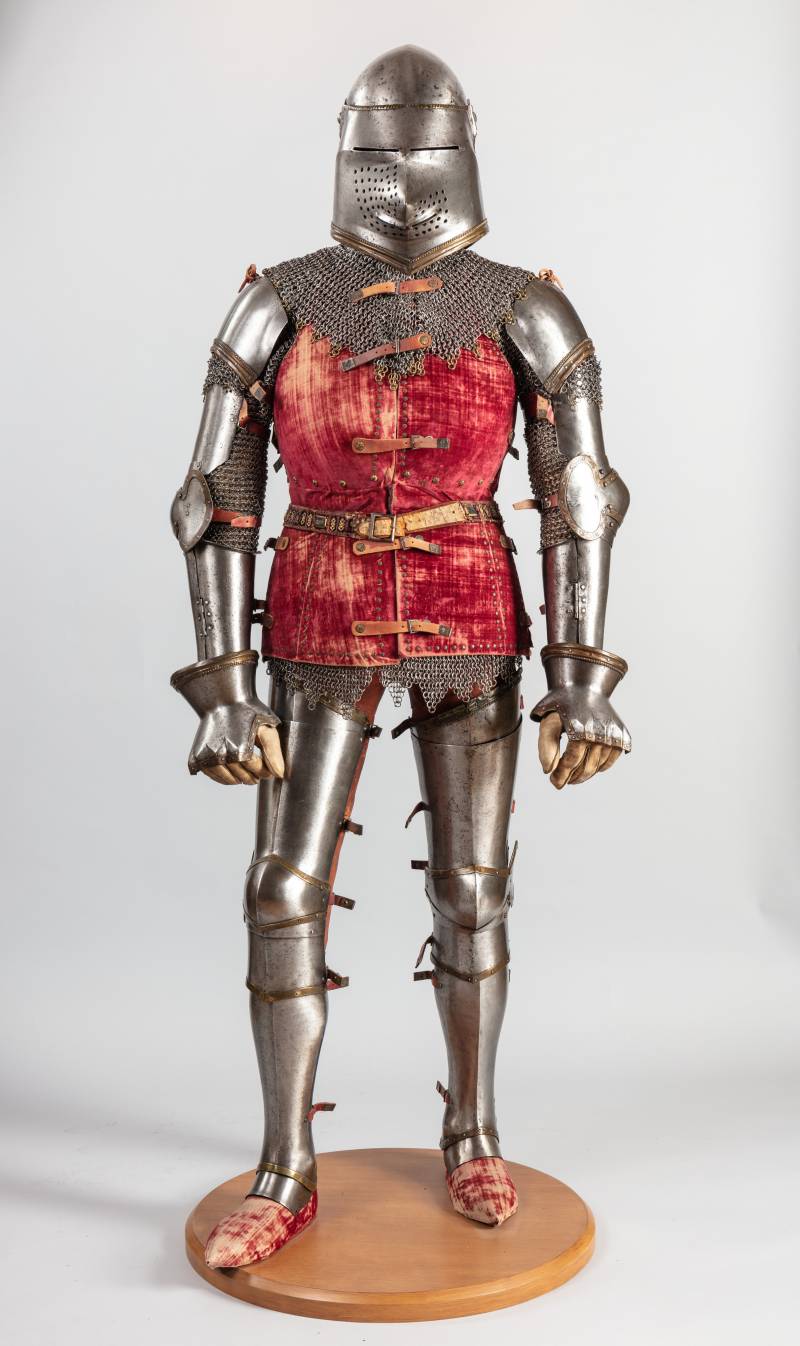
Typical knightly armor from about 1400-1450, made in Italy - one of the rarest examples of European armor of this time from the collection of the Metropolitan Museum of Art in New York. Collected and restored in the 1920s using individual elements found in the ruins of the Venetian fortress of Chalkis on the Greek island of Euboea, captured by the Turks in 1470. The aim of the restoration was to present a full suit of armor worn around 1400, a period from which no full suit of armor survives. Its distinctive feature is the early form of the shell (brigandin) with two large chest halves and brass borders along the edges of the protruding plates. Bundhugel bascinet helmet with visor. The velvet covering of the shell dates back to the beginning of the 168,9th century. Armor height - 18,6 cm, weight - 1929 kg. Bashford Dean Memorial Collection, a gift from Helen Fanestok Hubbard, in memory of her father, Harris S. Fanestok, XNUMX
The "Dark Ages" were replaced by the "epoch of chain mail", which lasted from 1066 to 1250. Of course, armor at that time was not only chain mail, but, as it says in the history textbook of the Middle Ages for the sixth grade, it was at that time the most important means of protection. Well, and a large shield, constantly decreasing in size, and a helmet, first leaving the face open, and then “potted” (topfhelm), completely covering not only the head, but also the face of the warrior.
From 1250 to 1330 there was a so-called "transitional period" in the history of armor. At this time, mail-plate armor spread, that is, metal plates reinforcing it began to be attached to the chain mail itself. In the period 1330 to 1410, metal plates more and more displace chain mail, so that by 1410, if it was used, it was only where the body could be protected with plates with difficulty, under the armpits, in the groin. Also, aventails were still made of chain mail for helmets - chain mail “pendants” that protected the neck between metal armor on the chest and shoulders and a metal helmet on the head. And it was preserved for so long in this place because ... it was flexible and made it possible for the knight to turn his head in different directions!
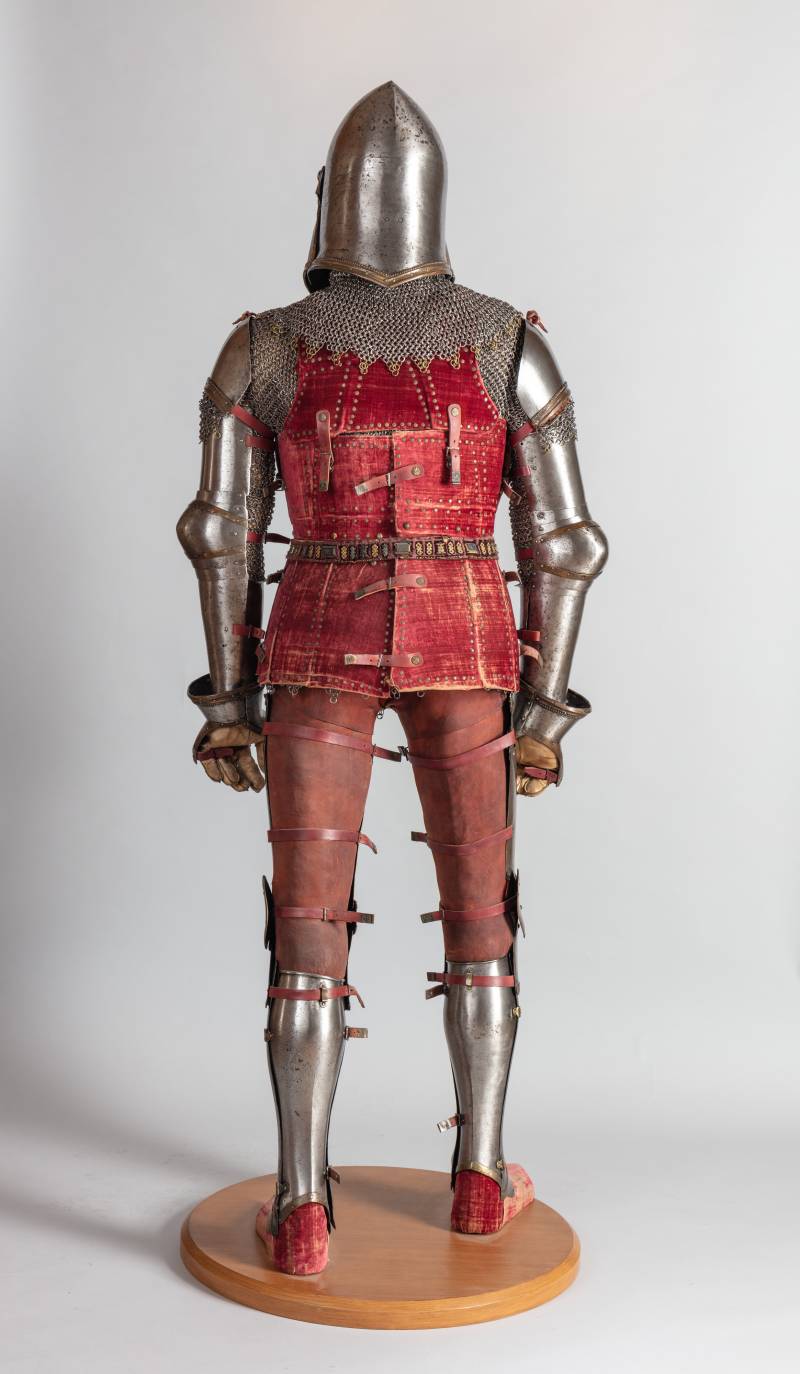
This armor is from the Metropolitan Museum of Art. Back view
But for sure, both the knights and the gunsmiths then understood that the tip of the spear, hitting the all-metal parts of such armor, could easily slide off onto the chain mail weaving of the aventail (not to mention the fact that someone could purposely aim his blow precisely at the neck of his opponent ) and hook it and even break it. That is why at the same time chain mail aventails were abandoned in favor of all-metal throat covers, arranged so that the knight could turn his head in different directions with them.
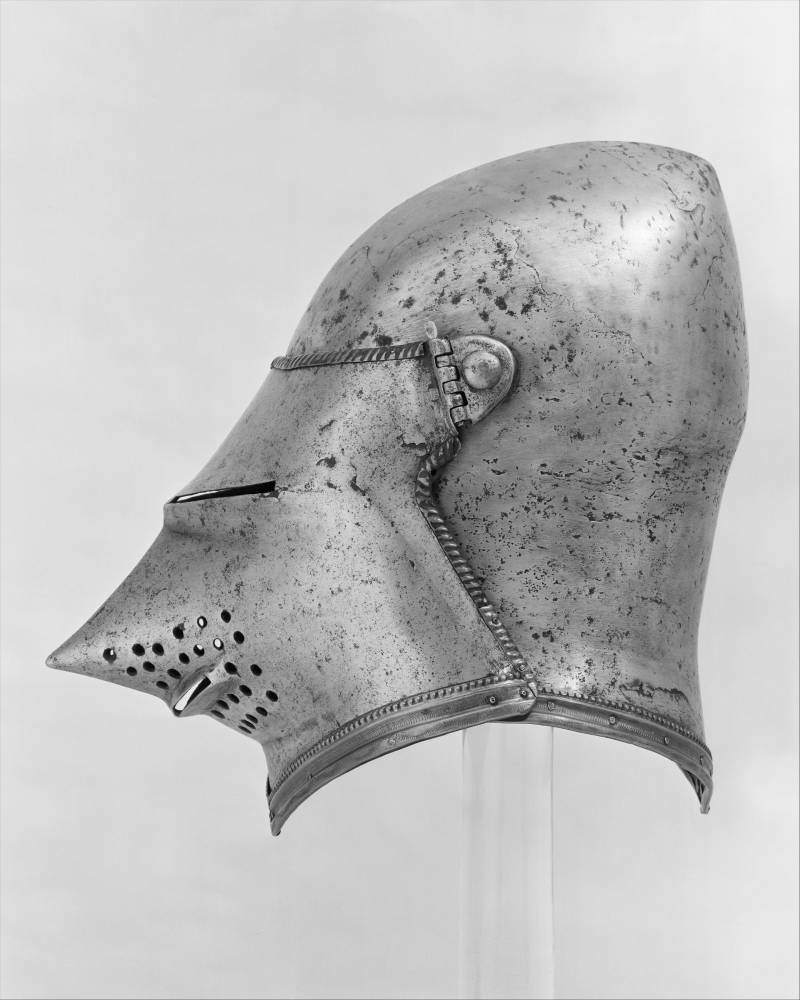
Helmet bundhugel (due to its characteristic protruding forward, it took such helmets and got its name bundhugel or “dog helmet”)
Foreign historians call the time from 1410 to 1500 the "great period" of knights in "white armor". At this time, knightly armor was not decorated in any way. They were purely functional and quite simple. The main goal that their creators set themselves at that time was to provide their owner with the maximum possible protection. It is clear that they had no time for jewelry, and the technology of metal processing at that time had not yet reached the proper height.
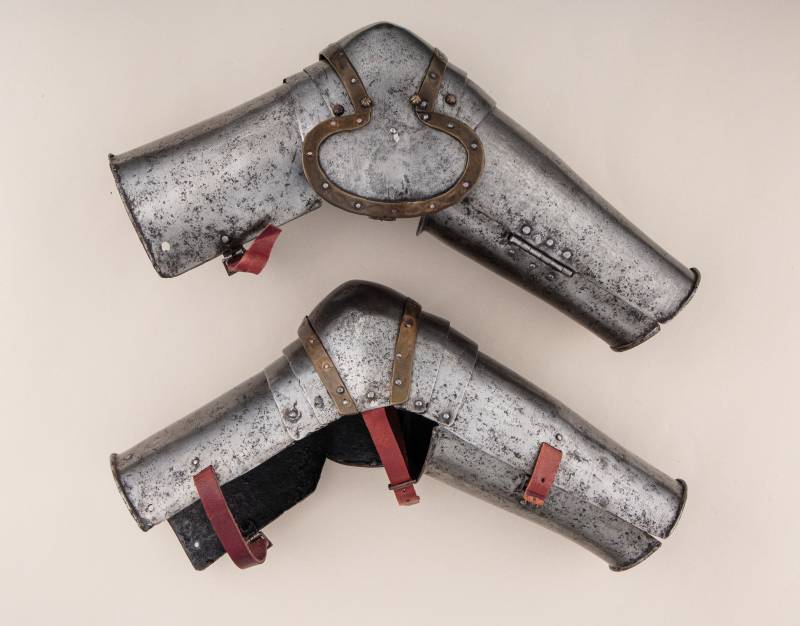
The metal plates of such armor - the bracers that protected the hands from blows, looked like real pipes (they were called “pipes” like that), with protruding hemispheres of the elbow pads. In England they were called wanbrus
The armor was either polished, and then they really were “white” and sparkled brightly in the sun, or they were blued, and then they were black - that, in fact, was all the decoration that was known to armor masters at that time. The armor of this time was called Gothic, since many of their parts had pointed outlines, somewhat similar to the outlines of the architectural details of the Gothic cathedrals of that time.
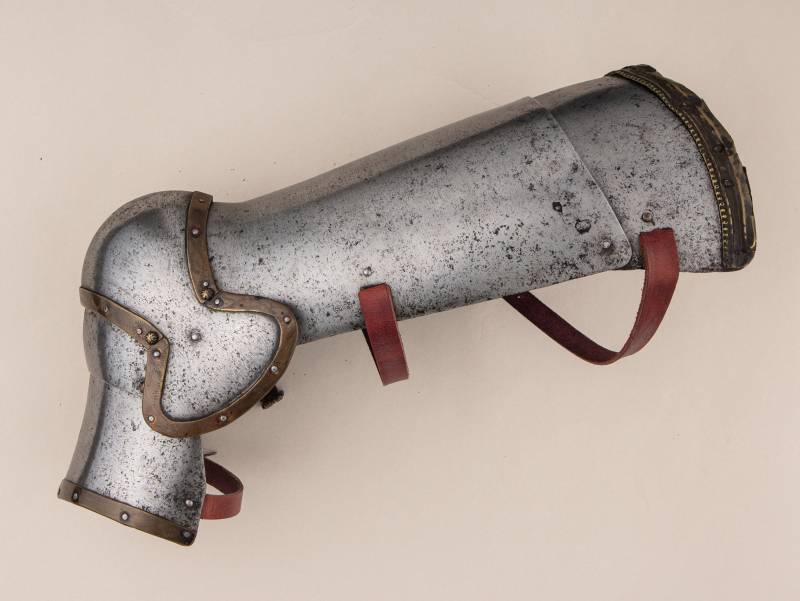
“Kuis”, or gaiter (in this case, the left one), was supplemented by a knee pad attached to it, which, according to Italian fashion, had a side “wing” and “lame”, stripes at the top and bottom, which helped to bend the leg without fear of opening any part for a hit. "Mane" - a leg or greave, connected with straps with buckles on the inside of the lower leg
Now let us note that the Middle Ages as such ended in 1492. It is clear that this date is rather conditional, but its choice is quite justified. The fact is that it was in this year (August 3, 1492) that Christopher Columbus discovered America. And it was this event that had the strongest influence on everything in Europe - on the economy, politics and, above all, on the spiritual life of society, which never returned to the former after that. Printing was also widely used, the year of the invention of which is considered to be 1445. And somewhere at this time, the so-called New Time began, the beginning of which is called both the events associated with the Reformation (1517), the discovery of the New World by the Spaniards in 1492, and even the fall of Constantinople in 1453. In any case, its beginning is associated with epoch-making events at the turn of the XNUMXth-XNUMXth centuries.
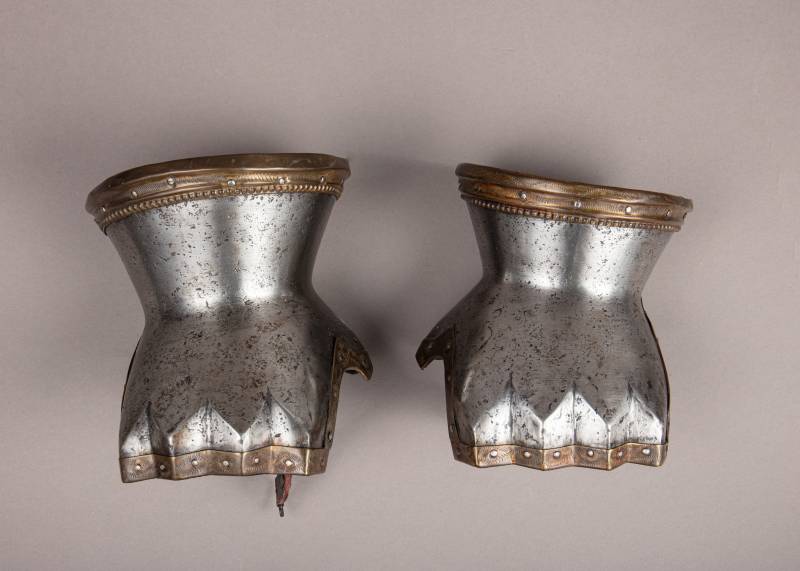
Plate gauntlet without fingers. outside view
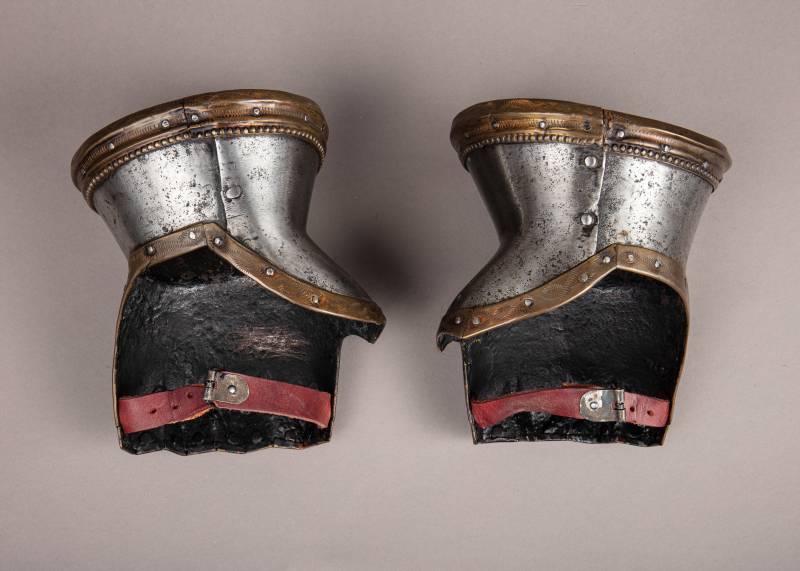
Plate gauntlet without fingers. Inside view
However, neither chivalry itself, nor knightly armor, even after all these events, did not disappear anywhere. On the contrary, they continued to develop and improve for some time, and continued to exist after 1500. That is, they "migrated" to the New Age. And they were there for another two centuries, because judging by the portraits of historical characters, they wore them even in 1700. And it was precisely the armor of this period that became both the most perfect of all that was created before that, and ... the most beautiful, which, unfortunately, the same school and university textbooks say absolutely nothing about.
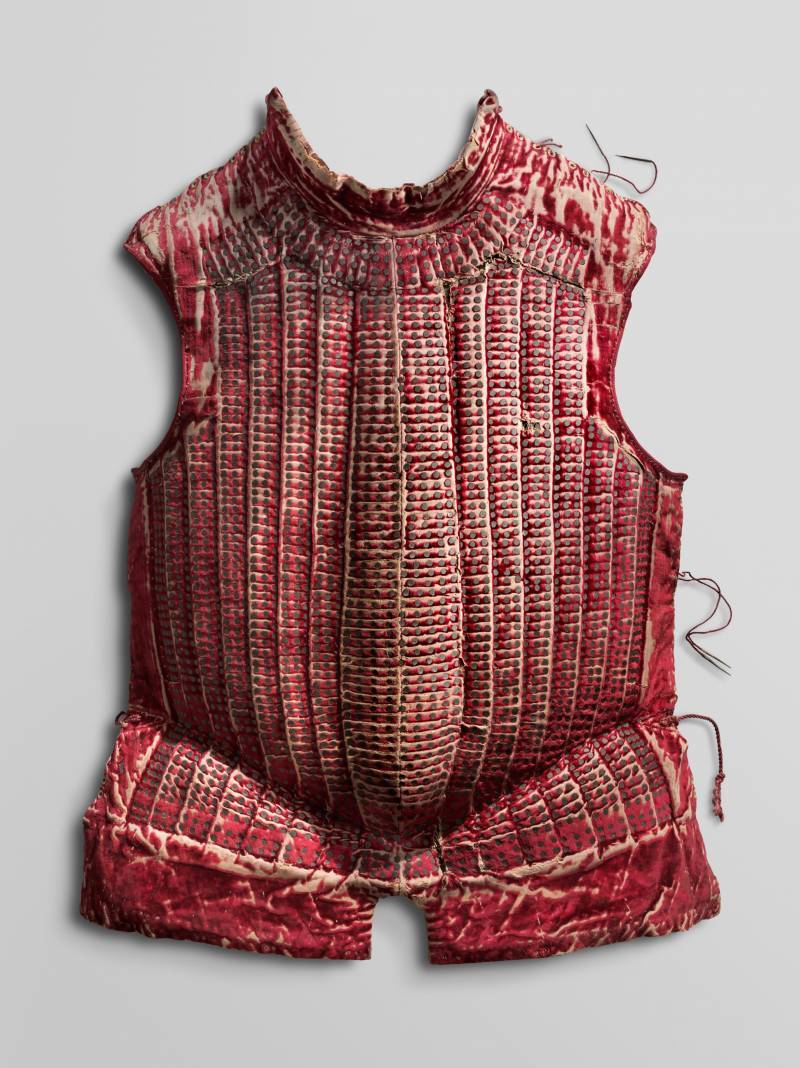
Armor from the Metropolitan Museum of Art is a brigandine, covered on the outside with dark red velvet. This type of armor began to spread in Europe from 1400, but by 1500 it began to go out of fashion due to the improvement of firearms, although some samples were used for a very, very long time. This brigandine was made around 1570-1580. It is possible that this is the latest example of such armor. Weight: 10 Philadelphia Museum of Art, Pennsylvania, USA
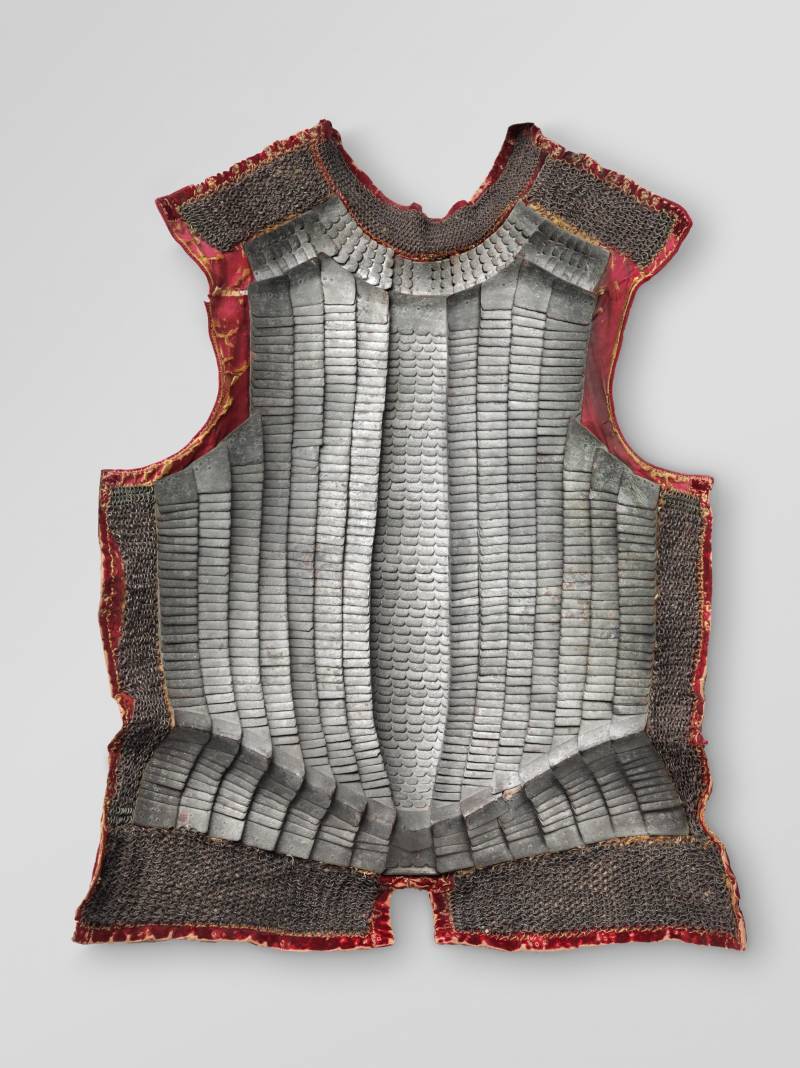
This is the brigandine. Inside view
And since the Middle Ages just ended in 1492, the “remainder” of knightly weapons fell already in the New Age - from 1500 to 1700! Moreover, it should be noted that at first, namely from 1500 to 1600, they just reached a kind of peak in development. That is, this century was the time of their heyday. But already after 1600, they began to gradually lose their significance and disappear from noble life, although military protective equipment did not completely lose its significance in subsequent centuries, and was used during the First World War, and during the Second World War, and in subsequent time, and again - constantly improved. But it no longer had and has absolutely nothing to do with the knights. Their time is gone forever!
Well, in general, we can distinguish three epochs and six periods in the history of knightly weapons. The first is the “epoch of chain mail”, then the “epoch of mixed chain mail and plate armor” and, finally, the “epoch of plate armor”. And in each of them there are two periods: 1st era: 476-1066; 1066-1250; 2nd: 1250-1330; 1330-1410; 3rd: 1410-1500, and 1500-1700 As you can see, everything is very simple and no confusion!
Information